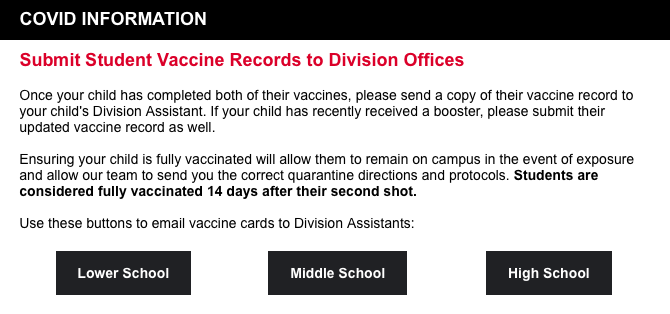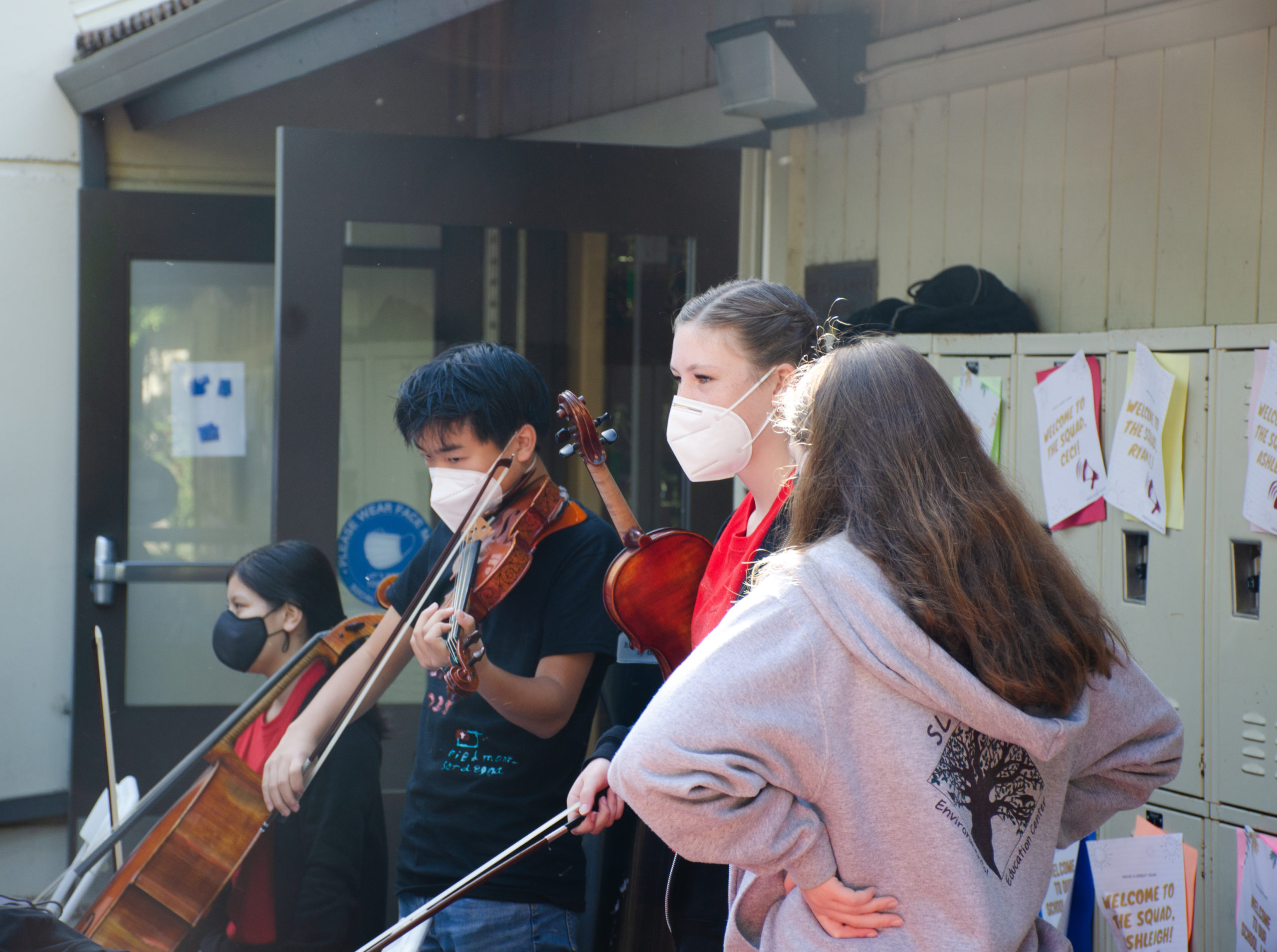With the increased spread of the COVID-19 Delta and Omicron variants, everyone remains at risk for infection, particularly the unvaccinated.
As of Dec. 6, 20 individuals in the Country Day community have tested positive for COVID-19 this school year, according to the school’s website. They include:
– 3 employees
– 2 high school students
– 1 middle school student
– 14 lower school students
Those who tested positive and some in their immediate vicinity needed to quarantine. Head of Lower School Maisae Affour explained that this uptick in cases can most likely be traced to the increasing freedoms within the general community. Since students have returned to out-of school activities and family members are back at work, there are far more opportunities for infection.
In addition, vaccines for children 5 to 11 were not available until Oct. 29. That said, the lower school maintains efforts to minimize the chance of on-campus transmission.
Currently, teachers assign students to small groups of three or four children who eat snacks and lunches with each other. These groupings are referred to as lunch buddies, and students are only allowed to be in unmasked interactions within their own groups.
When a student tests positive for COVID-19, the lower school calls in Director of the Physical Plant Jay Holman to trace contacts. Before anything else, Holman reaches out to the positive individual to better understand when the infection may have occurred.
“We’re basically just trying to figure out who they’ve been in touch with since the infection,” he said. “(Assistant to the Head of Lower School) Kristi Peoro in the lower school pulls the class seating charts, and from there, we notify all the contacts of what procedures must occur.”
At this point, the COVID-19 Symptom and Quarantine Decision Forest enters the picture, said Head of School Lee Thomsen. Based on guidance from the California Department of Public Health and the Sacramento County Health Department, the Decision Forest is an in-depth graphic that provides guidance on handling contact based on details of interpersonal interactions.
The guidelines are universally applied.
“We apply the same structure to every case,” Thomsen said. “The primary difference between high schoolers and lower schoolers are their vaccination statuses.”
When an unvaccinated student comes into unmasked close contact with a positive student, he or she must quarantine for 10 days following their last exposure. If the student is vaccinated they may return to campus immediately. Despite the surge in COVID-19 cases in the lower school, only one of these appears to have been contracted at school, Affour said.
Regardless of the location of the transmission, students with COVID-19 or those who have been exposed must quarantine.
When a positive COVID-19 case infiltrated one fifth-grade lunch group, the Haus family worried about their son’s education.
“As a contact, he was immediately asked to quarantine,” said Brian Haus, M.D. Four days into his quarantine, Haus’s son spent some time at a friend’s house.
Shortly thereafter, that friend tested positive, too — restarting the quarantine.
In total, Haus’ son underwent five COVID-19 tests and missed just under two weeks of in-class instruction.
“It was extremely difficult because they don’t have Zoom meetings this year,” he
said. “He was sort of left to figure material out on his own, which is pretty hard to do.”
The family reached out to the school in hopes of receiving Zoom support and were pleased by the teachers’ feedback. During the day, Haus’ son completed assigned work, and in the afternoon, he attended teachers’ office hours.
However, the Hauses faced technical difficulties, which, at times, interfered with their son’s ability to attend office hours.
“He ended up missing a few sessions, by no fault of the school, but obviously, still frustrating,” Haus said.
Haus recognized the difficulty of the situation but wishes the school could set up a Zoom for students unable to attend.
Thomsen, however, explained that faculty decided to treat quarantine just as they would another illness.
“Rather than trying to create the Zoom experience like we did last year, we would treat a person who’s quarantining at home as somebody who had broken a leg. For example, and couldn’t come to school for a period of time,” he said. “While it might seem like we’re just saying no to Zoom school, what we’re actually saying is ‘no, you don’t need to do all of the work the in-person kids are doing.’”
As a result, teachers decide how to instruct quarantining students.
Affour said steps are in place to keep students on track.
“When students come back, teachers will see them one-on-one to make sure that they make up all of the missed work,” she said.
Thomsen is still confident for the future.
“Already, we’re seeing lower school families vaccinating their kids,” he said. “The highest uptake among students has been in the high school, where I want to say 94% of students are vaccinated. Middle school seems to be somewhere around 80%, so if I were going to extrapolate, I would assume that there might be a few more lower school families who are hesitant to vaccinate, but I don’t know that for sure.”
As more families begin to vaccinate their children, similar to the Haus family, the lower school expects to see a drop in cases.
— By Simone DeBerry
Originally published in the Dec. 14 edition of the Octagon.



